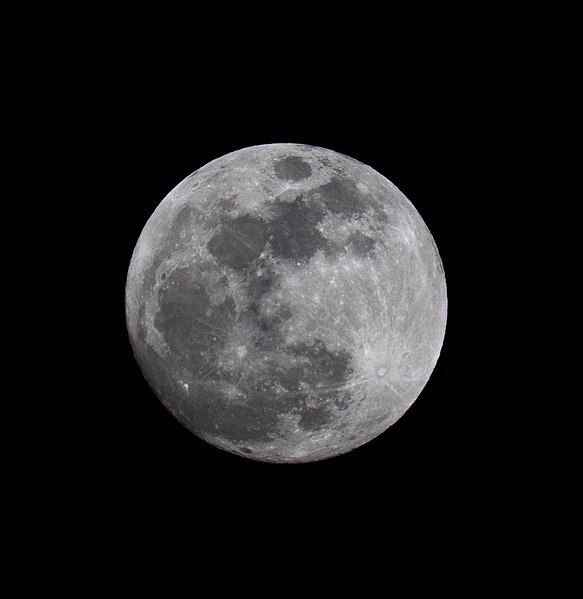
Rare blue supermoon. Photograph courtesy of Wikimedia Commons, licensed under CCO 3.0.
August is coming to its end—a blessing or a curse, depending who you ask. Here’s what the Review’s staff and friends are doing these days, before we all go (metaphorically) back to school.
Summer Streets, Saturday, August 26: It is the last weekend of New York’s Summer Streets, so take advantage now, runners, bikers, and amblers. Huge stretches of the city will beshut down between 7 A.M. and 1 P.M. in Brooklyn and the Bronx. Vendors will be hawking wares like coconut water, ice cream, and Coca-Cola; oddly enough, there is even a Teenage Mutant Ninja Turtles: Mutant Mayhem immersive experience along the way. Our web editor, Sophie Haigney, will be jogging merrily along the car-free expanse of Eastern Parkway in Brooklyn.
New York Liberty vs. Las Vegas Aces at Barclays Center, August 28: Our assistant editor Oriana Ullman encourages everyone to turn out for the tail end of the WNBA season, one of summer’s great sporting pleasures. “This is the last matchup of the year between the league’s two superteams,” Oriana tells us. “The Liberty just beat the Aces in the Commissioner’s Cup, but go to get another preview of what the Finals showdown will probably be.” (The playoffs begin September 13.)
The U.S. Open at USTA Billie Jean King National Tennis Center, August 28–September 10: Our managing editor, Kelley Deane McKinney, recommends going on opening day, when there will be matches happening on twenty-two courts. A day pass will get you access to twenty-one of them. She advises anyone attending to skip the main court, Arthur Ashe: “The stadium is too big for tennis and the good seats are all corporate boxes full of people who don’t know or care about the games and chat loudly the whole time,” she says. “Real heads know that Louis Armstrong is the better show court, only seating fourteen thousand.” A tip: sections one and two get the most shade during the day, but every seat has a great view! You can skip the signature cocktail, the Honey Deuce, which features tennis ball–shaped honeydew pieces floating in spiked raspberry lemonade “for, like, twenty-two dollars. This year I bet it’s twenty-five.”
Super blue moon, August 30: Our former intern and forever friend Owen Park alerted us to an important celestial happening. These days, it might seem that the moon is being overhyped: there are harvest moons, blood moons, supermoons, more moons than we can even count! But this one is actually really rare—a second full moon in the month of August, and the biggest and brightest of 2023. Misleadingly, the moon will not, itself, be blue; however, we now know the source of the cliché, and it will be one of your only chances to deploy it literally: once in a blue moon!
Sung Tieu’s Infra-Specter at Amant Galleries, through September 24: Remember Havana syndrome? The visual artist Sung Tieu takes the alleged sonic attacks targeting U.S. and Canadian diplomats as the subject of his recent artworks, now on display in Brooklyn. Another work explores U.S. military tactics in Vietnam—particularly the sound weapon titled “Ghost Tape No. 10.” This recommendation comes to us from contributor to and friend of the Review Krithika Varagur.
J’ai Été Au Bal (I Went to the Dance) (1989) at IFC Center, Friday, September 1: Our intern Anna Rahkonen is going to IFC, to see a new 5K restoration of this film by the late documentarian Les Blank, codirected by Chris Strachwitz. I Went To The Dance documents the history of the music of Southwest Louisiana, featuring interviews and performances from prominent Cajun and zydeco performers.
Roundup: National Cinema Day, which means four-dollar movies at many theaters around the city, August 27; Kira Muratova doubleheader at Film at Lincoln Center (buy a ticket to one movie and get a ticket to the other free), through August 31; Winter Kills at Film Forum, starting August 25; Hester Street Fair, September 2 and 3; West Indian American Day Carnival, September 4; going to the beach, any day, any time, in celebration of the end of summer!
from The Paris Review https://ift.tt/hJp7gek
Comments
Post a Comment